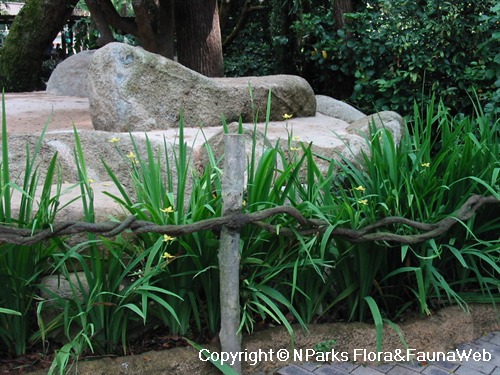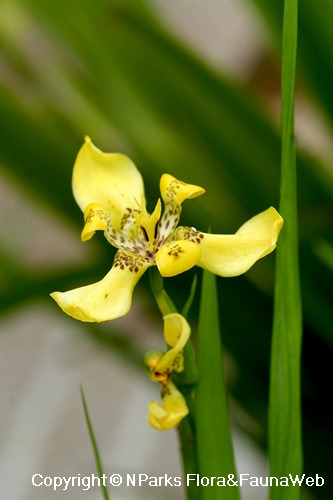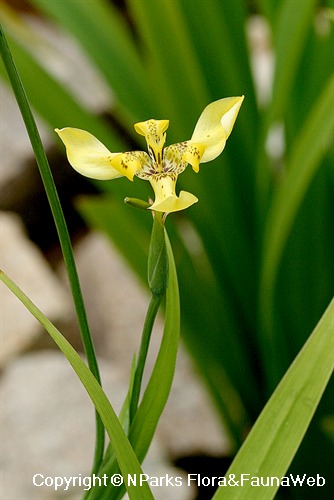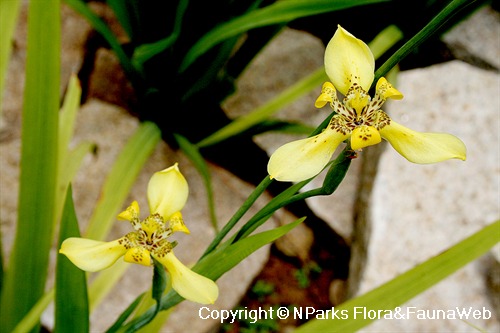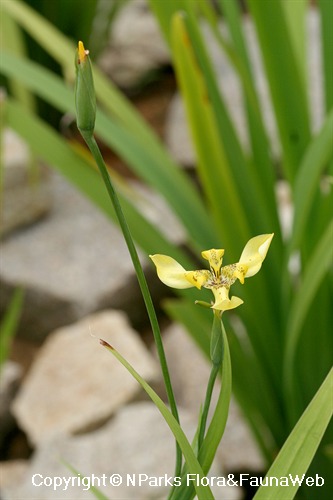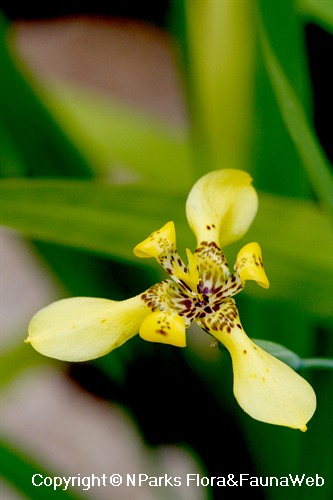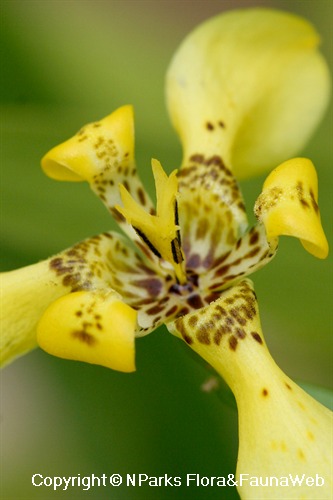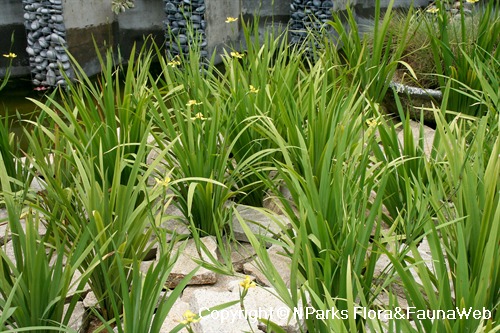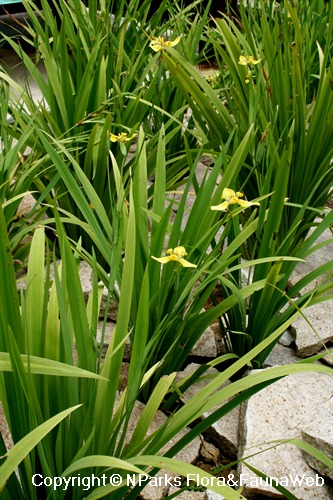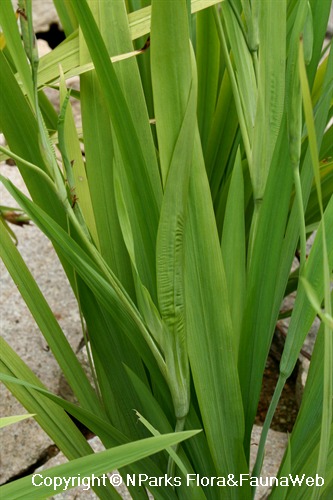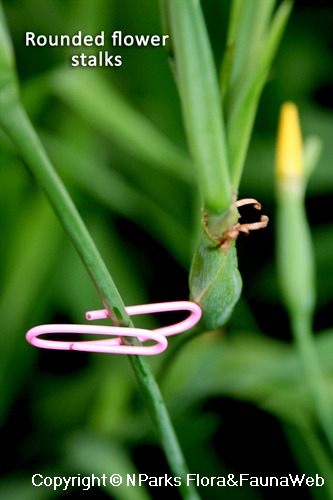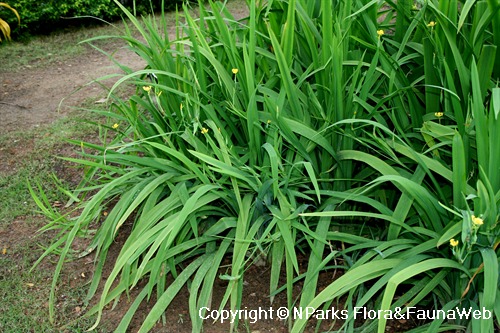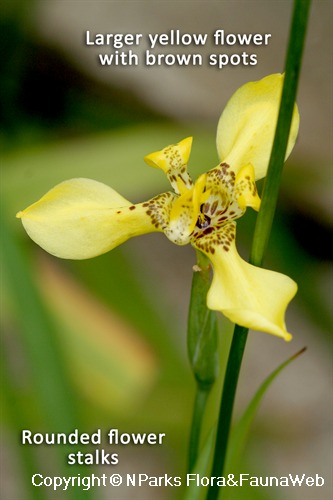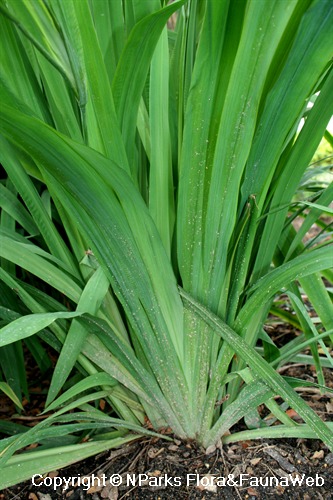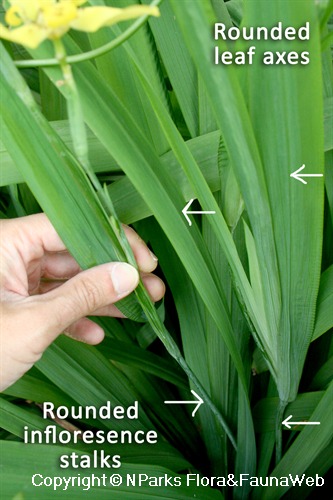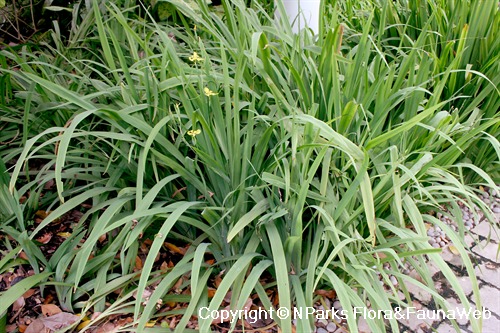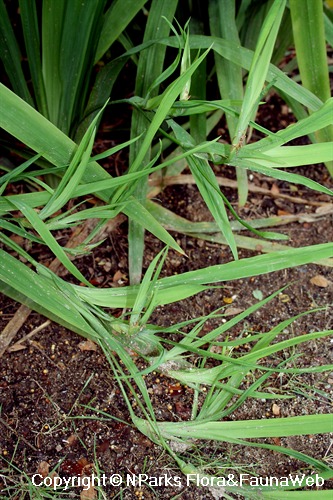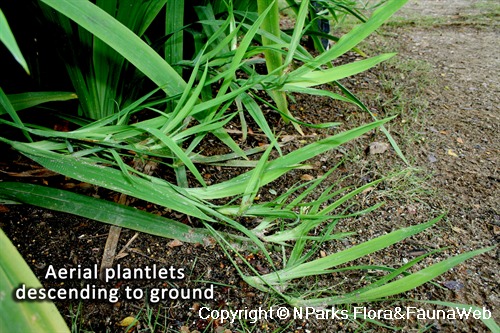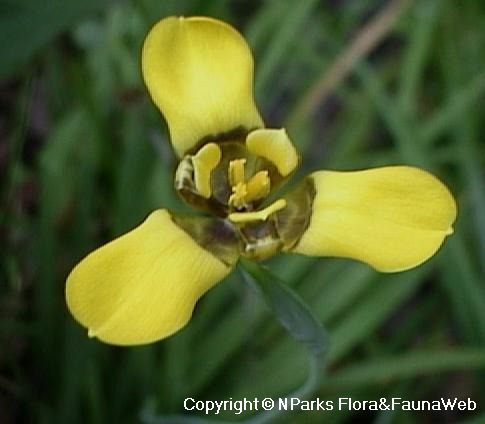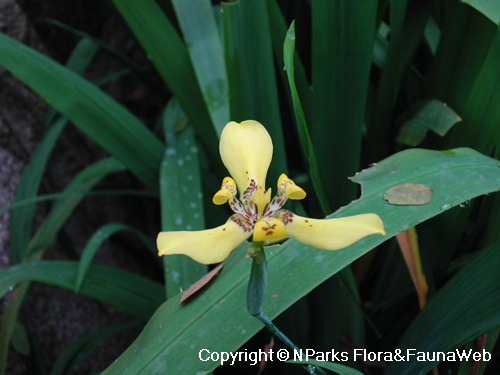
Back
Trimezia steyermarkii R.C. Foster
| Family Name: | Iridaceae |
| Synonyms: | |
| Common Name: | Yellow Walking Iris |
Name
Classifications and Characteristics
| Plant Division | Angiosperms (Flowering Seed Plants) (Monocotyledon) |
|---|---|
| Plant Growth Form | Herbaceous Plant |
| Mode of Nutrition | Autotrophic |
| Maximum Height | 0.9 m to 1.2 m |
Biogeography
| Native Distribution | Mexico to Venezuela |
|---|
Description and Ethnobotany
| Growth Form | Herbaceous rhizomatous shrub that grows in grassy clumps, up to 1.2m height. |
|---|---|
| Foliage | Flat strap-like leaves, arising in fan-like arrangement from underground rhizomes. |
| Flowers | Iris-like, bright yellow with prominent mottled brown spots, with 3 bigger outer petal segments, produced on top of rounded infloresence stalks that arise from base of plant. Flowers short-lived, lasting only 1 day and curling up in the evening, but plant is free-blooming. |
| Others - Plant Morphology | Aerial Plantlets: Produced from spent inflorescences, which arch towards the ground with weight of growing plantlets, and allowing these to take root upon contact with ground. |
| Habitat | Low-nutrient, well-drained soils and forest debris in humid areas. |
| Similar | Resembles and often misidentified as Neomarica longifolia or Trimezia martinicensis. Differentiated by shape of infloresence stalks -- Trimezia has rounded flower stalks and leaf axis, while those in Neomarica are flattened. Trimezia steyermarkii has larger yellow flowers with brown spots, but Trimezia martinicensis has smaller pure yellow flowers. All 3 species mentioned here are different species, although often confused and used interchangeably with one another. Most of the commonly-cultivated plants known horticulturally as Neomarica longifolia are actually Trimezia steyermarkii . |
| Cultivation | Hardy species, fairly easy to grow, withstands waterlogged soils but also drought-tolerant when established. Withstands alkaline soils of pH 6.6 - 7.8. Propagate by division of clumps, rhizomes or aerial off-sets. |
| Etymology | Genus epithet 'Trimezia' derived from Greek terms "treis" (three) and "megas" (great), a reference to the distinctive flowers, whose 3 outer segments are bigger than the inner ones. Species epithet 'steyermarkii' named after American botanist Julian Steyermark (1909-1988) who specialized in New World flora, especially those in Missouri, Venezuela and Guatemala, and collected more than 130,600 plants from 26 countries during his lifetime, earning him an entry in the Guiness Book of World Records. Common name 'Walking Iris' refers to the plant's characteristic of producing plantlets that take root upon ground contact, thus helping the plant propagate itself by "walking". |
Landscaping Features
| Desirable Plant Features | Ornamental Flowers, Ornamental Foliage |
|---|---|
| Landscape Uses | Parks & Gardens, Flowerbed / Border |
| Thematic Landscaping | Golden Garden |
Plant Care and Propagation
| Light Preference | Semi-Shade, Full Sun |
|---|---|
| Water Preference | Moderate Water, Lots of Water |
| Rootzone Tolerance | Waterlogged Soils (Drains Site), Drought Tolerant, Fertile Loamy Soils, Well-Drained Soils |
| Maintenance Requirements | Moderate |
| Propagation Method | Storage Organ, Division, Aerial Plantlet |
Foliar
| Foliage Retention | Evergreen |
|---|---|
| Mature Foliage Colour(s) | Green |
| Mature Foliage Texture(s) | Smooth, Thin |
| Foliar Type | Simple / Unifoliate |
| Foliar Venation | Parallel |
| Foliar Margin | Entire |
| Leaf Area Index (LAI) for Green Plot Ratio | 3.5 (Shrub & Groundcover - Monocot) |
Non - Foliar and Storage
| Stem Type & Modification | Acaulescent |
|---|---|
| Root Type | Underground (Fibrous Root) |
| Specialised Storage Organ(s) | Underground (Rhizome) |
Floral (Angiosperm)
| Flower & Plant Sexuality | Bisexual Flowers |
| Flower Colour(s) | Brown, Yellow / Golden |
|---|---|
| Flower Symmetry | Radial |
| Flowering Period | Free-Flowering |
| Flower Lifespan on Plant | 1 Day |
| Flowering Habit | Polycarpic |
Image Repository
Others
| Master ID | 967 |
|---|---|
| Species ID | 2261 |
| Flora Disclaimer | The information in this website has been compiled from reliable sources, such as reference works on medicinal plants. It is not a substitute for medical advice or treatment and NParks does not purport to provide any medical advice. Readers should always consult his/her physician before using or consuming a plant for medicinal purposes. |

